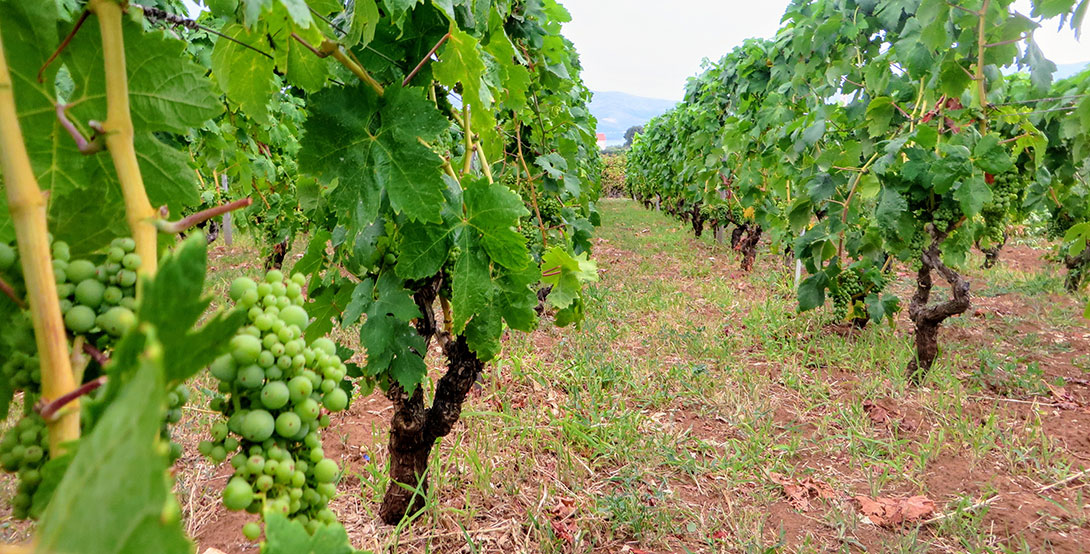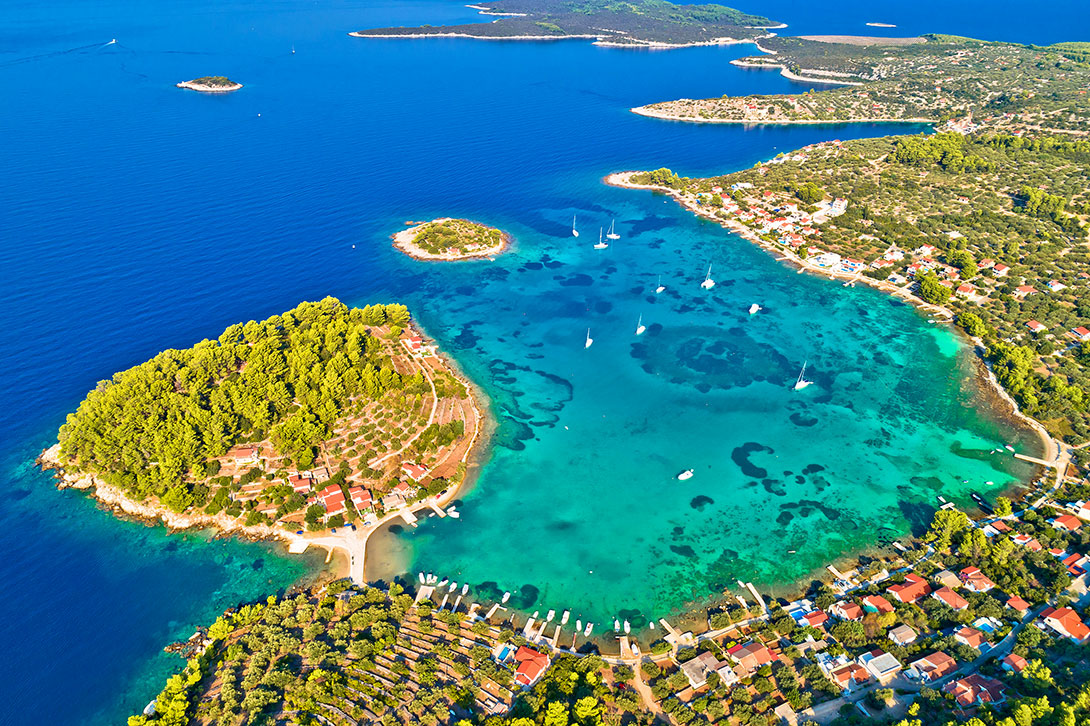TOP Things to Do in Korcula Island, Croatia
Things to Do in Korcula Island, Croatia, on a Sailing Holiday:
In this guide, we'll uncover the Top Things to Do in Korcula Island, Croatia, a treasure trove of activities and sights to make your visit to Korcula unforgettable.
Korčula is one of Croatia's most beautiful seaside towns, and it's thought that Marco Polo was born there. Some people say it's like a miniature version of Dubrovnik because the two cities are alike in some ways.
Little Dubrovnik
Korčula is genuinely worth a visit! Some call it "little Dubrovnik" because the old city centre irresistibly resembles a mini replica of the most beautiful Mediterranean city, Dubrovnik. The medieval grid of the city within the fishbone-shaped walls has been preserved to this day and is, therefore, extremely interesting to historians of urbanism and other scientists.

According to legend, Korčula was founded by the Trojan emperor Ahtenor in the 12th century BC. It was first mentioned in written works in the 4th century BC, at the time of the arrival of the ancient Greeks. They gave the city and the island the name Korkyra Melaina, and the Romans after them Korkyra Nigra - literally translated as Black Forest, probably after the island's characteristic wooded landscape. The Romans ruled Korcula until the 6th century when the island came under Byzantine rule. In the 9th century, the city was conquered by Croats from the Neretva area, and they named it Krkar or Karkar. Venice's ruling followed on as many as four occasions over several centuries, and many other armies and navies passed through this part of the Adriatic - from Austrian, Russian, Neapolitan and Genoese to Russian and Turkish. Korcula is the perfect destination if you love history, nature, and delicious food or want to unwind by the sea. With so much to offer, from stunning landscapes to traditional cuisine, you will find something special on this island. Korcula, a Croatian island, is celebrated for its unique attractions and several distinctive features, making it a sought-after destination thanks to all these top things to do in Korcula town.
It is allegedly the famous Marco Polo's birthplace.
Did you know that Marko Polo's birthplace is in Korčula?
One of its most famous claims to fame is being regarded as the birthplace of the legendary explorer Marco Polo. The alleged house of Marco Polo still stands in Korcula Town, attracting visitors intrigued by the history and tales of the famed traveller.

Marko (Marco) Polo (1254–1324) was a Venetian explorer and world traveller, according to a document from the 15th century, originating from Korčula. Some still argue about the credibility of that claim, but some data can support it as very likely. Namely, the street and the part of the city where, according to contemporary records (preserved to this day), Mark's birthplace corresponds to the area that has belonged to the Polo family for centuries. That family (and the surname "Polo") still exists today. There are also disputes about the Italian or Croatian origin of the name. Still, the most logical assumption seems to be that it is of Slavic (Croatian) origin and comes from a waterfowl called Pol in that area.
This is supported by the coat of arms of the Polo family, which contains images of four waterfowl. Moreover, Marko himself signed himself with Pol, not the Latinized Polo. Born into a Venetian merchant family, according to local legend, Marco Polo entered the world within the walls of Korčula Town. While the exact details of Marco Polo's birthplace remain shrouded in mystery and debate among historians, Korčula has embraced this association wholeheartedly. Visitors to the island can explore the supposed birth house, marked by a plaque, in the heart of Korčula Old Town. Though reconstructed over time, the house is a symbolic homage to the celebrated traveller.

The island pays tribute to Marco Polo's legacy in various ways, with the Marco Polo Museum occupying a prime spot within the town. The museum delves into the life and adventures of this iconic figure, showcasing artefacts, maps, and narratives that highlight his remarkable journeys along the Silk Road to the court of Kublai Khan. The association with Marco Polo adds an extra layer of allure to Korčula's already vibrant cultural tapestry. It encourages travellers to delve into the island's natural beauty and the captivating legends and historical connections that have shaped its identity over the centuries.
Must-visit attraction: The Revelin Tower

If you're looking for top things to do in Korcula, a must-visit attraction in Korcula Old Town, the Revelin Tower is worth checking out. The structure was constructed during the 15th century as a defensive component of the town's architecture. The tower played a crucial role in protecting Korcula from potential threats. Its strategic location on the eastern side of the town allowed it to guard the entrance to the harbour and fortify the town's defences.
The tower features classic medieval architecture with robust stone walls and a defensive structure equipped with parapets for archers and guards. Visitors can climb up to the top of the tower and enjoy panoramic views of Korcula Old Town, the Adriatic Sea, and the surrounding landscapes. From this vantage point, you can better understand the town's layout and appreciate its historical significance. In addition to its defensive role, the Revelin Tower is an important cultural heritage site in Korcula. Visitors can explore its interior, which sometimes hosts exhibitions and cultural events that shed light on the town's history. The Revelin Tower is a unique attraction that offers visitors a glimpse into Korcula's medieval past while providing breathtaking views of this picturesque Croatian town and its surroundings.
St. Mark's Cathedral

Korcula's stunning medieval town, encircled by fortified walls, boasts Venetian-influenced architecture. The layout of the town's streets is designed in a fishbone pattern, and its well-preserved buildings and historic sites, such as St. Mark's Cathedral, showcase the island's rich cultural heritage. St. Mark's Cathedral is an architectural marvel located in the heart of Korcula Old Town. It is a testament to the island's rich cultural heritage and showcases a beautiful fusion of Gothic and Renaissance styles. The cathedral was built between the 14th and 15th centuries, and its intricate stonework and ornate facade are a sight to behold.
The exterior is adorned with sculpted details and a stunning bell tower that adds charm. As one steps inside the cathedral, they are greeted by a serene atmosphere and an impressive array of artworks, including pieces from local artists. Besides its religious significance, the cathedral holds excellent historical and cultural importance, offering a glimpse into Korcula's artistic prowess and cultural legacy. Therefore, it is a must-visit attraction for anyone exploring this enchanting Croatian island.
Cultural Heritage and Moreska Sword Dance

Korcula Island, situated in Croatia's Adriatic Sea, is a beautiful and culturally rich destination. One of the most noteworthy cultural highlights of the island is the Moreska sword dance. This traditional performance reenacts a battle between the Moors and the Christians. The dance is an integral part of Korcula's history and has been passed down from generation to generation. The intricate movements and choreography of the dance represent the battle, with the swords symbolizing the conflict. The Moreska sword dance is frequently performed during cultural celebrations and events, showcasing the vibrant and unique heritage of Korcula Island.
Wine Production - Grk Wine:

Korcula Island, located in the Adriatic Sea, is a must-visit destination for wine enthusiasts. The island's rich history and unique climate have led to the development of vineyards that produce some of the finest wines in the world. Among these is the Grk wine, a white wine made from an indigenous grape variety that grows exclusively in the region. Grk wine has ancient origins, dating back to Greek settlers who inhabited the island of Korčula in the Adriatic Sea around the 4th century BC. The name "Grk" is derived from the Greek word "grk," which means bitter, possibly referring to the grape's slightly bitter taste. Grk is made from the indigenous white grape variety of the same name, grown exclusively on the island of Korčula. The island's unique climate, soil, and geographical features contribute to the distinct character of Grk wine. Traditionally, Grk vines were cultivated in a specific manner called "pruning with three eyes," where only three buds were left on the vine, limiting its yield but ensuring higher quality grapes. The Croatian geographical indication system protects the production of Grk wine, ensuring that only grapes grown on Korčula can be used to produce this wine.
It has a protected designation of origin (PDO) status. Grk wine is typically made using traditional winemaking techniques. The grapes are hand-harvested and then subjected to gentle pressing to extract the juice, fermented and aged in stainless steel or oak barrels. Grk wine is known for its fresh and crisp character, with flavours often described as citrusy, with hints of Mediterranean herbs and minerality. It's generally a dry white wine with good acidity. The unique taste of the wine is a result of the distinct terrain of the island and the unique characteristics of the grapes used. Pairing Grk wine with local seafood dishes is recommended to enhance the region's culinary traditions. A tour of the vineyards and a chance to sample this delicious wine are must-see experiences when visiting Korcula Island.
Pristine Beaches and Coastal Beauty:

The island's picturesque coastline is home to stunning beaches, secluded coves, and crystal-clear waters, making it a popular destination for visitors looking for a serene and beautiful coastal escape. Some of the most sought-after spots include Vela Przina Beach and Pupnatska Luka Bay, which offer breathtaking views and opportunities for relaxation and water activities. Pupnatska Luka Bay is a natural gem located on the southern coast of the island of Korčula in Croatia, well-known for its stunning beauty.

The bay is surrounded by cliffs covered with lush Mediterranean vegetation, and its crystal-clear turquoise waters embrace a pebble beach. The scenic landscape attracts both locals and tourists seeking a tranquil seaside escape. The beach at Pupnatska Luka is composed of smooth pebbles, which makes it a comfortable spot for sunbathing and relaxation. The calm and clear waters of the bay are ideal for swimming, snorkelling, and other water activities, while its shallow waters make it family-friendly. Pupnatska Luka Bay has become a popular tourist destination on the island of Korčula due to its natural allure, tranquillity, and suitability for various leisure activities. During the peak season, it can attract many visitors seeking relaxation and natural beauty. Vela Pržina Beach is a renowned and beloved beach on the southern coast of the island of Korčula in Croatia. Vela Pržina is known for its expansive sandy beach, a relatively rare feature among Croatian beaches, making it stand out among the pebble and rocky coastlines in the region.

The soft, golden sands provide a comfortable setting for sunbathing and leisure activities. The beach is embraced by the clear, shallow waters of the Adriatic Sea, which are inviting for swimming, wading, and various water sports. Families with children particularly enjoy the gentle slope of the seabed, making it safe and enjoyable for kids to play in the water. Due to its sandy coastline and amenities, Vela Pržina Beach is a popular tourist spot during the summer months. It attracts locals and international visitors seeking relaxation, fun, and natural beauty.
Experience the magic of Korcula, an enchanting island in the Adriatic Sea, boasting captivating landscapes, azure waters, and charming medieval towns - the perfect destination for a stop on a sailing charter holiday. So, set sail, feel the gentle sea breeze and discover the top things to do in Korcula!



